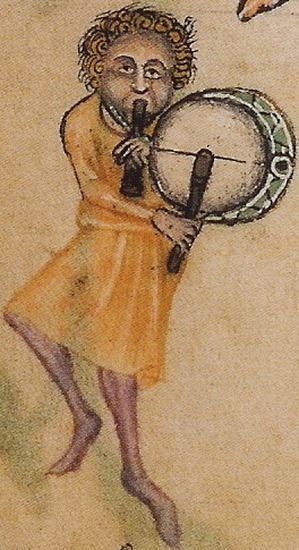 | ||
Classification | ||
Tabor or tabret (Welsh: Tabwrdd) refers to a portable snare drum played with one hand. The word "tabor" is simply an English variant of a Latin-derived word meaning "drum"—cf. French: tambour, Italian: tamburo It has been used in the military as a marching instrument, and has been used as accompaniment in parades and processions.
A tabor has a cylindrical wood shell, two skin heads tightened by rope tension, a leather strap, and an adjustable gut snare. Each tabor has a pitch range of about an octave: the larger the tabor, the lower the pitch. It is played by just one stick, which usually strikes the snare head. The tabor is suspended by a strap from the forearm, somewhere between the elbow and wrist. When played, the shell is virtually parallel with the ground.
The tabor is most widely known as accompaniment for the pipe and other small flutes, and most famously as the percussive element in the "pipe and tabor" one-man band configuration. The tabor is beaten on the snare side.
In Spain, a deep drum is used for a tabor by pipe and taborers, and in England a shallow tom tom is sometimes used, although medieval icons of pipe and tabor usually display a large shallow tabor similar in shape to a bodhrán.
Georges Bizet scored for the tabor drum in his L'Arlesienne Suite No. 2, and Aaron Copland calls for it in his Appalachian Spring and El Salón México.
